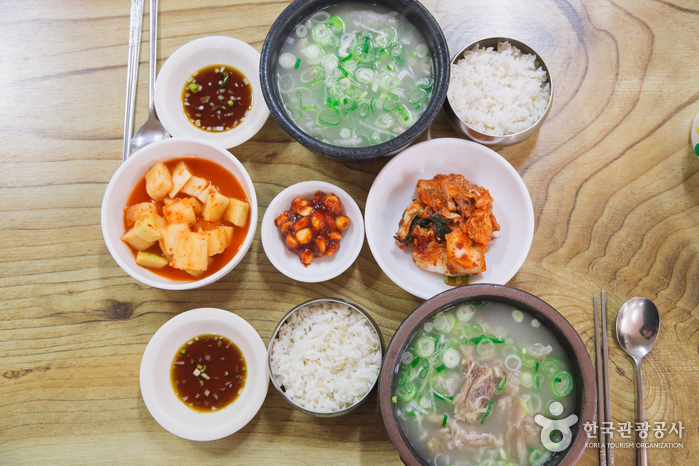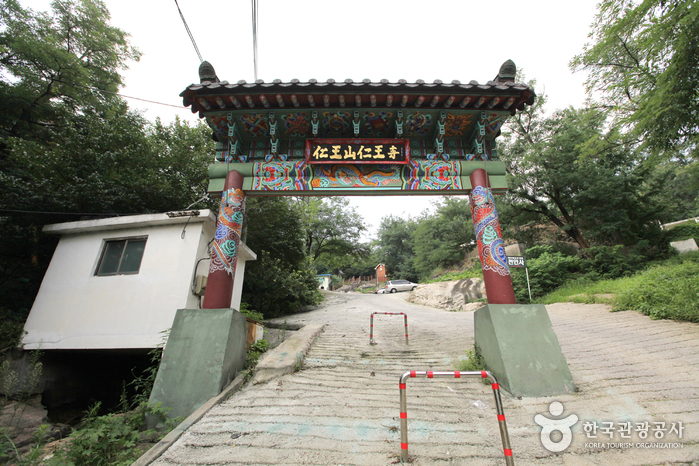Olive Young - Bucheon Station Nambu Branch [Tax Refund Shop] (올리브영 부천역남부점)
10.2Km 2024-06-27
1F, 226, Gyeongin-ro, Sosa-gu, Bucheon-si, Gyeonggi-do
-
E-Mart - Gyeyang Branch [Tax Refund Shop] (이마트 계양)
10.2Km 2024-04-22
785, Bongo-daero, Gyeyang-gu, Incheon
-
Daesungjip (대성집)
10.3Km 2021-03-27
5, Sajik-ro, Jongno-gu, Seoul
+82-2-735-4259
Daejungjip has specialized in Dogani tang (ox knee joint soup) for 60 years. Customers can feel a simple and familiar ambience at the restaurant.
Himart - Gyesan Branch [Tax Refund Shop] (하이마트 계산점)
10.3Km 2024-04-16
791, Jangje-ro, Gyeyang-gu, Incheon
-
Inwangsa Temple (인왕사 (서울))
10.3Km 2020-04-02
16-1, Tongil-ro 18ga-gil, Jongno-gu, Seoul
+82-2-737-4434
Inwangsa Temple refers to the entire cluster of small Buddhist temples located on Inwangsan Mountain (alt. 338m) in the heart of Seoul. The eastern foot of the mountain has many scenic spots with its distinctively cozy and tasteful atmosphere, and the northern area called Mugye-dong also offers beautiful scenery. Inwangsa Temple was established in the early Joseon period (1392-1910) to guard the national palace Gyeongbokbung. The temple is comprised of 11 shrines from five different Buddhist orders. The unique design of each shrine adds pleasure to hikers on their way up to Seonbawi, an unusual rock formation that is a site of many folk beliefs and shamanist rites.
Olive Young - Bucheon Okgil Branch [Tax Refund Shop] (올리브영 부천옥길점)
10.3Km 2024-06-27
#101 and #102, 124, Okgil-ro, Sosa-gu, Bucheon-si, Gyeonggi-do
-
LG Best Shop - Gwanak Branch [Tax Refund Shop] (엘지베스트샵 관악점)
10.3Km 2024-04-18
210, Bongcheon-ro, Gwanak-gu, Seoul
-
Dongnimmun Yeongcheon Market (독립문영천시장)
10.3Km 2023-01-17
189-1, Tongil-ro, Seodaemun-gu, Seoul
Yeongcheon Market, which was formed in the 1960s near Dongnimmun Gate in Seodaemun-gu, is a marketplace with over 50 years of history and tradition, once famous as one of the largest rice cake wholesale markets in Seoul. It is set up near a residential district, which makes it one of the city's most notable street-style traditional markets that nearby residents frequently visit. The city of Seoul selected the area surrounding 38 Yeongcheonsijang-gil, Seodaemun-gu as the "Future Heritage of July" in 2021.
It is a large-scale traditional market that currently features around 198 stores, and it is well-known for its various foods and snacks such as tteokbokki and twisted donuts sold at about 40% of all shops.
![Petillante [Tax Refund Shop] (뻬띠앙뜨)](http://tong.visitkorea.or.kr/cms/resource/33/3313133_image2_1.jpeg)
![S Market Kids [Tax Refund Shop] (S마켓키즈)](http://tong.visitkorea.or.kr/cms/resource/97/3314897_image2_1.jpg)

![E-Mart - Gyeyang Branch [Tax Refund Shop] (이마트 계양)](http://tong.visitkorea.or.kr/cms/resource/08/2882408_image2_1.jpg)

![Himart - Gyesan Branch [Tax Refund Shop] (하이마트 계산점)](http://tong.visitkorea.or.kr/cms/resource/04/2882404_image2_1.jpg)

![LG Best Shop - Gwanak Branch [Tax Refund Shop] (엘지베스트샵 관악점)](http://tong.visitkorea.or.kr/cms/resource/59/2880459_image2_1.jpg)
 English
English
 한국어
한국어 日本語
日本語 中文(简体)
中文(简体) Deutsch
Deutsch Français
Français Español
Español Русский
Русский